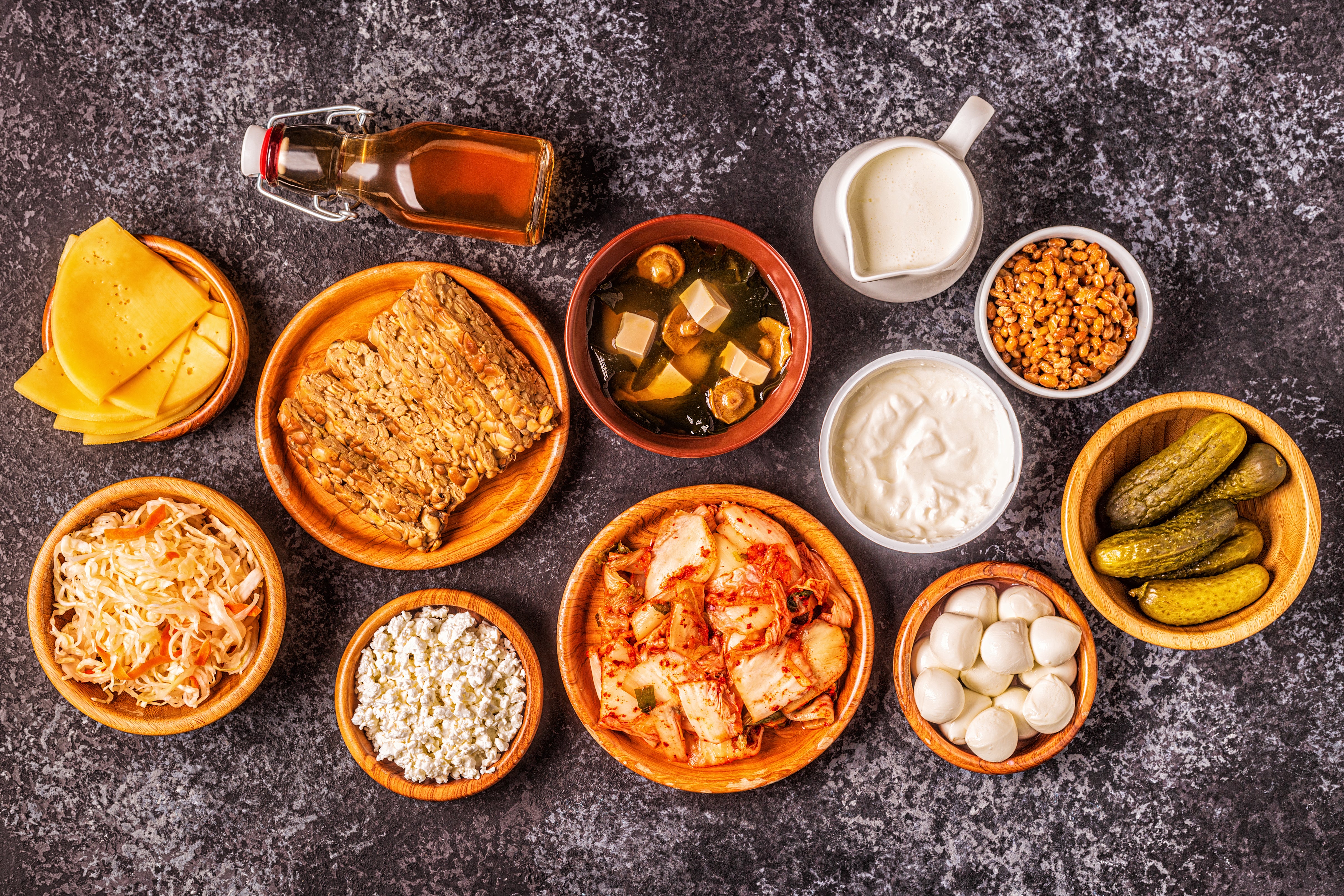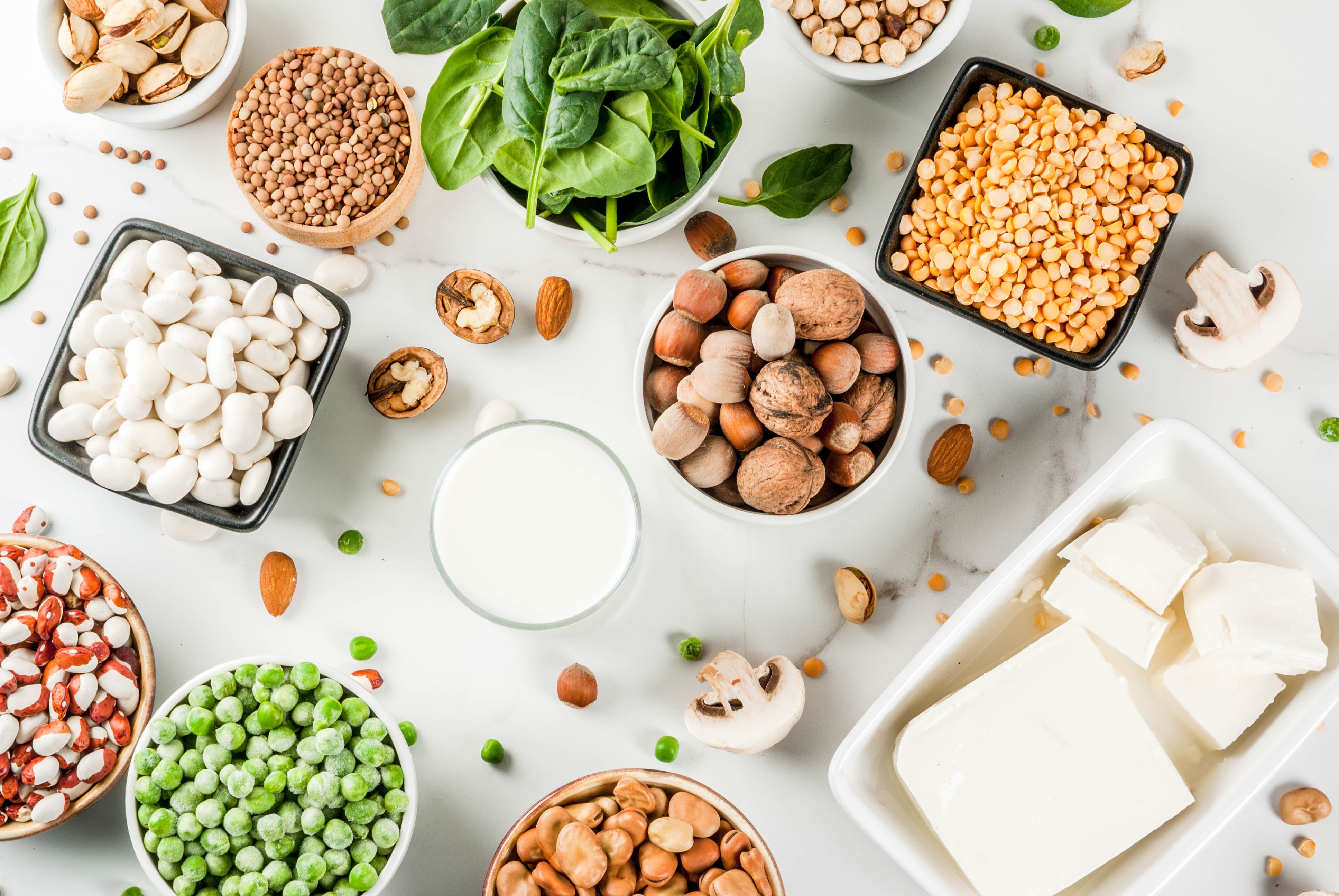How Can I Increase Protein In My Child's Diet?
When it comes to the meals you should feed your child, you may face a challenging decision. In a market filled with options, selecting the right foods that are both tasty and healthy is a must for your children. When thinking about what to feed their children, parents should put an emphasis on providing them with the right amount of protein.
In this article, you will learn how protein supports optimal growth and development and how to get your child to eat more protein.
Why is Protein Important for Children’s Growth?
Protein is a macronutrient necessary for a child’s growth and health. When the body digests, protein from food is broken down into amino acids. These are the building blocks needed to produce protein in the body (hair, muscle, skin, bones, hormones, antibodies, and enzymes). Amino acids are classified into essential, non-essential, and conditional.
Did you know? The body is not capable of producing essential amino acids. When we say “essential,” this means that they must be supplied from the diet.
On the other hand, non-essential amino acids can be synthesized by the human body. For individuals with increased protein needs (children, athletes, and those recovering from an illness, injury, or surgery), conditional amino acids in the diet are given importance.
What Will Happen If My Child Is Not Consuming Enough Protein?
Inadequate protein intake in children often results to:
- slow growth
- poor concentration
- delayed wound healing
- fatigue
- vulnerability to diseases.
If one or more of these signs check, it is time to boost your child’s protein intake.
How Much Protein Does Your Child Need?
The protein needs of younger children vary with age. The daily protein requirement for children 4 to 9 years old is 19 grams. Those in the age range of 9-13 years old require 34 grams.
Making sure your child gets the recommended minimum amount per day would prevent the signs of a deficiency. It is best to consult a nutritionist-dietitian to determine how much protein your child should be getting.
How Can I Increase Protein In My Child's Diet?
Get to know the good quality sources of proteins!
Most animal protein sources contain all essential amino acids, whereas plant-based protein sources generally lack one or more essential amino acids.
But don't feel you have to restrict your child's diet to exclude animal products to ensure he or she gets enough of the proper amino acids.
You can make sure your child gets all the amino acids they need by feeding them a variety of plant-based protein sources.
Let’s look into the different protein sources you can give your child.
Animal Sources
Animal proteins are considered complete protein sources because they include all nine necessary amino acids. These are examples of animal proteins.

Cow’s Milk
At an age where it can be better tolerated, milk is often introduced into a child’s diet. The most commonly consumed dairy milk is made by the mammary glands of cows.
Protein content
One glass (100 grams) of whole cow’s milk contains approximately 3.27 grams protein.
Other nutrients
Milk is also a rich source of calcium, B Vitamins, A and D, and minerals.
Egg
Eggs vary depending on the animal source. Chicken, duck, and quail eggs are the most common in the market. Among these, chicken eggs are most often used for culinary purposes.
Protein content
One large chicken egg contains 12.4 grams of protein.
Other nutrients
Your child will also benefit from Vitamin A, choline, and biotin in eggs.
Poultry
Poultry products include chicken and turkey. Kids love their chicken nuggets, but there are better options than feeding your child processed food. You can get creative with some child-friendly chicken recipes.
Protein content
Your child’s protein needs are sure to be covered as a 100-gram serving of chicken breast contains 32.1 grams of protein.
Other nutrients
Poultry products contain other nutrients such as vitamin B12, iodine, iron, and zinc.
Lean Meat
Your child can also get protein from beef and pork. However, intake should be moderated as these are high in saturated fat. It is recommended to bake or saute the meat to limit the use of oil.
Protein content
A 100 grams of beef loin contain about 27.7 grams of protein.
Other nutrients
Lean meat is also a good source of minerals and B vitamins.
Fish
Fish is a nutritious alternative aside from other animal meat products. Although not many kids love fish, these are also excellent protein sources. You can let them taste tuna, salmon, tilapia, cod, trout, or bass.
Protein content
A 4-ounce of salmon contains 30 grams of protein.
Other nutrients
Fatty fish contain omega-3, which helps keep a healthy heart.
Plant-based sources

Beans
Beans are tiny seeds, but they are packed with protein. These are the seeds of many plants in the family Fabaceae. They are a staple ingredient in many cuisines worldwide and can be prepared in various ways, including boiling, frying, and baking.
Protein content
Some examples of beans are chickpeas (14.5 g/cup), kidney beans (15.3 g/cup), black beans (15.2 g/cup), and soybean (31.3 g/cup).
Other nutrients
Aside from protein, beans are also a rich source of fiber, micronutrients, and antioxidants.
Legumes
Peas and lentils may not be popular among kids, but their rich protein content helps prevent a deficiency.
In fact, protein from peas is considered a high biological value (HBV) protein. It means that it is a food that contains all nine essential amino acids - a complete protein!
Protein content
Cooked green peas contain 8.58 grams per cup, while a cup of cooked lentils provides 18 grams of protein.
Other nutrients
Like beans, legumes are also excellent sources of fiber, antioxidants, and minerals such as iron.
Soy Milk
A meat-free alternative to cow’s milk, soy milk can be consumed by vegan children. Soy milk is made from soaked soybeans and water and can easily be prepared at home.
Protein content
A 100 ml glass of unsweetened soy milk contains 2.78 grams of protein.
Other nutrients
Soy milk is an excellent source of vitamins A and B and minerals such as potassium, calcium, and choline.
Tofu
Tofu, also called soft bean curd, is a popular ingredient in Asian dishes.
Protein content
It is made from soybeans and contains 8 grams of protein per cup.
Other nutrients
Tofu is also a good source of calcium, potassium, and iron.
Peanut Butter
Instead of that sweet chocolate spread, peanut butter in your child’s sandwiches can be a healthier option. For store-bought peanut butter, make sure to check the label for the sodium and fat content.
Protein content
Five tablespoons (around 100 grams) of creamy peanut butter contains 24.5 grams of protein.
Other nutrients
Peanut butter is loaded with vitamin B6, vitamin E, magnesium, iron, selenium, and vitamin B6.
Nuts and Seeds
Nuts and seeds can replace those bags of chips or cookies as snacks for kids. It includes pumpkin seeds, almonds, sunflower seeds, chia seeds, cashews, and pecans.
Protein content
These can help boost your child’s protein intake, as 100 grams of peanuts already contain 24.4 grams of protein.
Other nutrients
Nuts and seeds are rich in vitamin E, vitamin B6, niacin, folate, magnesium, zinc, iron, copper, selenium, phosphorus, and potassium.
How About Protein Supplements For Children?
Protein supplements do the trick if you find yourself with a picky eater child. Some commercially available protein supplements are in the form of protein powders, capsules, and gummies.
As long as you don't push your children's protein intake above the recommended intake, protein supplements can be part of their diet. If you are concerned about whether or if your child needs additional protein, you should consult a pediatrician.
How To Choose the Best Protein Supplements For Your Children?
It is recommended to consult a pediatrician or a dietitian to ensure your child consumes the right protein supplement for them. There are also accompanying side effects to excess protein, such as weight gain and organ damage which parents need to be cautious of.
Protein supplements are generally safe for consumption as long as these are tolerated well by your child. However, protein from whole foods should still be given priority.
Visit this page to learn more about protein powders for kids.
Our Take Away
Ensuring proper nutrition for your child is key to their healthy growth and development. One such nutrient that should be prioritized in your child’s diet is protein.
Protein is made up of a pool of amino acids that can either be produced by the body or obtained only through dietary sources.
These essential amino acids are found in a variety of animal- and plant-based foods such as eggs, milk, meat, beans, and legumes.
Protein supplementation can be given to children with increased protein needs following advice from a health professional.
Looking For A Nutrition Support For Your Child?
Give your child the healthy nourishment they need with Nuzest's Kids Good Stuff! It contains pea protein isolate, a type of protein that has a high biological value. It is also rich in vitamins Bs, C, D, E, and K!
How can our Kids Good Stuff help your child?
- Boosts their vitamins & minerals intake to strengthen their immunity.
- Supports bone and muscle development with 8g of plant-based protein per serve.
- Promotes healthy and happier insides with pre-and probiotics
- Provide long-lasting energy to help them live, learn, grow and play!
There is more! We've ensured that Kids Good Stuff has no substances that are harmful to your children. It is Non-GMO, low-sugar, vegan, gluten-free, dairy-free, nut-free, and nut-free!
Kids Good Stuff
Parents asked, we answered. Kids Good Stuff is the one-and-done nutritional support that growing bodies need.

Disclaimer:
The information provided on Nuzest is for educational and informational purposes only. The information provided on this site is not, nor is it intended to be, a substitute for professional advice or care. Please speak to your qualified healthcare professional in the event that something you have read here raises questions or concerns regarding your health.
















